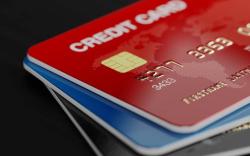How to trade stocks from home?
Trading stocks from home has become increasingly accessible with the advancement of technology and the availability of online brokerage platforms. Here's a guide on how to set up and some strategies to consider when trading stocks from home:
Setting Up:
Select a Reliable Computer: Ensure you have a reliable computer or laptop with a stable internet connection. A fast and stable internet connection is crucial for real-time trading.
Choose a Suitable Trading Platform:
- Research and select an online brokerage platform that suits your needs. Look for user-friendly interfaces, low commissions, research tools, and educational resources.
- Create an account with the chosen brokerage and complete any required documentation and verification.
Install Trading Software:
- Download and install the trading software provided by your brokerage. Most brokers offer web-based platforms that you can access through your web browser, as well as desktop applications and mobile apps for trading on the go.
Fund Your Account:
- Transfer funds into your trading account. Be sure to follow your brokerage's instructions for depositing money.
- It's essential to start with an amount you can afford to lose, especially if you're new to trading.
Set Up a Comfortable Workspace:
- Designate a quiet and comfortable workspace free from distractions where you can focus on your trading activities.
- Ensure you have proper lighting and ergonomics to reduce eye strain and discomfort during long trading sessions.
Trading Strategies:
Day Trading:
- Day trading involves buying and selling stocks within the same trading day. Traders aim to profit from short-term price fluctuations.
- Day traders often use technical analysis, charts, and patterns to identify entry and exit points.
Swing Trading:
- Swing traders hold stocks for several days or weeks, aiming to capture price swings within a trend.
- This strategy often combines technical analysis with fundamental analysis to identify potential opportunities.
Long-Term Investing:
- Long-term investors buy stocks with the intention of holding them for years or even decades.
- They focus on fundamentals, such as company financials, and may use a buy-and-hold approach.
Options Trading:
- Options trading involves buying or selling options contracts rather than the underlying stocks. Options can be used for hedging, income generation, or speculative purposes.
- Options trading is more complex and carries higher risk, so it's essential to understand it thoroughly before engaging.
Risk Management:
- Implement risk management techniques like setting stop-loss orders to limit potential losses.
- Diversify your portfolio to spread risk across different stocks or asset classes.
Stay Informed:
- Keep up with financial news and events that could impact your investments.
- Regularly review your trading strategies and adapt them as needed based on market conditions.
Emotional Discipline:
- Avoid making impulsive decisions driven by emotions like fear or greed. Stick to your trading plan.
- Maintain a trading journal to track your trades and emotions, helping you learn from both successes and mistakes.
Continuous Learning:
- Trading is a skill that requires continuous learning. Stay updated on market trends, strategies, and new technologies.
Remember that trading stocks involves risk, and there are no guarantees of profit. It's essential to start with a solid education, develop a clear trading plan, and practice disciplined risk management to increase your chances of success when trading stocks from home.
Trading Stocks from Home: A Comprehensive Guide
Getting started
- Choose a brokerage firm. There are many different brokerage firms to choose from, so it's important to compare their fees and services before you open an account. Some factors to consider include:
- Trading fees: How much does the broker charge per trade?
- Account fees: Does the broker charge any monthly or annual fees?
- Minimum deposit: What is the minimum amount of money that you need to deposit into your account to open it?
- Investment choices: What types of investments does the broker offer?
- Customer support: How good is the broker's customer support?
- Open a brokerage account. You can usually open a brokerage account online in a matter of minutes. You will need to provide some basic information, such as your name, address, and Social Security number.
- Fund your account. Once you have opened a brokerage account, you need to deposit money into it before you can start trading. You can do this by linking your bank account or by mailing a check.
Placing trades
Once you have funded your account, you can start placing trades. To place a trade, you will need to specify the stock you want to buy or sell, the number of shares you want to buy or sell, and the price you are willing to pay or receive.
There are two main types of orders that you can place:
- Market order: A market order is an order to buy or sell a stock at the best available price.
- Limit order: A limit order is an order to buy or sell a stock at a specific price or better.
Monitoring your investments
Once you have placed a trade, it's important to monitor your investment and make adjustments as needed. You should keep an eye on the company's financial performance and the overall stock market. If the company's performance declines or if the stock market starts to fall, you may want to sell your shares.
Trading stocks from home can be a convenient and flexible way to invest. However, it's important to remember that stock trading is risky and there is no guarantee of profit.
Home-Based Stock Trading: Getting Started and Best Practices
Getting started
- Choose a brokerage firm. As mentioned above, there are many different brokerage firms to choose from. When choosing a brokerage firm, consider the factors listed above, as well as the following:
- Trading platform: What trading platform does the broker offer? Is it easy to use and understand?
- Mobile app: Does the broker offer a mobile app? This can be helpful if you want to trade on the go.
- Research tools: Does the broker offer any research tools? This can be helpful for making informed trading decisions.
- Open a brokerage account. Once you have chosen a brokerage firm, you can open a brokerage account online.
- Fund your account. Once you have opened a brokerage account, you need to deposit money into it before you can start trading.
- Educate yourself. Before you start trading stocks, it's important to educate yourself about the stock market and how it works. There are many resources available online and in libraries that can help you learn more.
Best practices
- Have a trading plan. A trading plan should outline your investment goals, your risk tolerance, and your entry and exit criteria for each trade.
- Use stop-loss orders. A stop-loss order is an order to sell a stock at a specific price, regardless of the market price. This can help you limit your losses on a losing trade.
- Don't overtrade. Overtrading is one of the biggest mistakes that new traders make. It's important to be patient and wait for the right opportunities to trade.
- Manage your emotions. Trading can be emotional, but it's important to keep your emotions in check. Don't make trading decisions based on greed or fear.
Trading Flexibility: How to Trade Stocks Comfortably from Home
One of the biggest benefits of trading stocks from home is the flexibility it offers. You can trade from anywhere in the world, as long as you have an internet connection. This can be a great option for people who have busy schedules or who travel frequently.
Here are some tips for trading stocks comfortably from home:
- Set up a dedicated trading space. This could be a desk in your home office or even just a corner of your kitchen table. It's important to have a space where you can focus on your trading and where you won't be interrupted.
- **Invest in a













